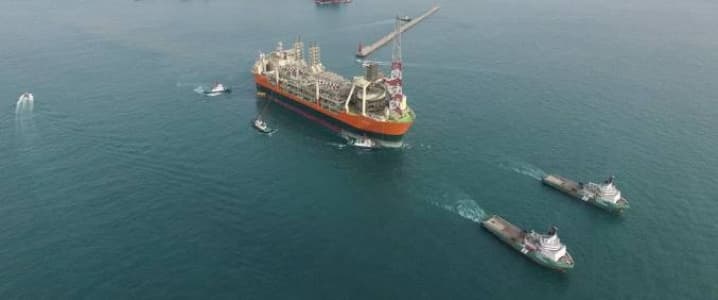The petroleum industry in Mexico dates back over a century to 1901 where the commercial production of crude oil began. Since then, both Great-Britain and the United States played major roles in helping the country grow to being the world’s second largest producer of oil in the 1920s.
The Mexican revolution caused major political unrest, and led to the nationalization of all hydrocarbon resources and the creation of the national oil company, PEMEX, in 1938. Today, approximately 50 percent of oil produced in Mexico is heavy crude, and Mexico is now the eighth largest oil producer in the world, exporting $18.8 billion worth of crude oil in 2015.
PEMEX produced about 2.23 Mbbl/day in February 2016, down from its peak of 3.4 Mbbl/day in 2004, of which about 76 percent of production comes from offshore fields. The Northeast region consists of the Ku-Maloob-Zaap (KMZ) and Cantarell field, which contribute about 63 percent of offshore production. The Southwest region encompasses Abkatun-Pol Chuc, and Litoral de Tabasco, which accounts for the remaining production.
(Click to enlarge)
The business asset Ku Maloob Zaap began production in 1981 and consists of five fields: Ku, Maloob, Zaap, Bacab, Lum, and Zazil-Ha. In recent years, production from Ku Maloob Zaap was at 850,000 bbl/day in 2014, and PEMEX expects to maintain this production until 2017.
Following this, the inevitable decline is expected to take over due to natural gas depletion from the reservoir. In order to maintain production in the Ku Maloob Zaap field, PEMEX has adopted an operational philosophy based on the application of reservoir management best practices, establishing and using specific measurements and criteria to manage production limits as well as maintaining reservoir pressure through nitrogen injection. Maintaining production also requires drilling new wells, which has been hindered by the recent environment in the industry. Related: This Billionaire Could Change The Resource Industry Forever
(Click to enlarge)
Detailed map of South-East Mexico oil (red) and gas (blue) fields
(Click to enlarge)
Cantarell consists of four fields: Akal, Nohoch, Chac, and Kutz—all which are formed of high permeability fractured carbonate rock. Production from the Ku Maloob Zaap field has helped in offsetting the rapidly declining production from the Cantarell field, which reached its peak at 2.2 million bbls/day and by 2015 had dropped to 256,000 bbls/day.
One of the main reasons for the decreasing production is due to the existence of a giant natural gas bubble that was maintaining pressure across the reservoir for the first 20 years of the field. In an effort to counteract the decreasing reservoir pressure, PEMEX developed and installed the world’s largest nitrogen generation plant used to maintain reservoir pressure. The Cantarell field now experiences increasing gas and water production, and is being used as lessons learned in developing reservoir management guidelines to be applied to the Ku Maloob Zaap Field. Related: Is This A Death Sentence For U.S. Strippers?
The recent turmoil in the industry has heavily affected production, with PEMEX revenue decreasing by about 30 percent since year-end 2013 and about 3 percent decrease in producing wells. After about seven decades of monopoly by PEMEX, the Energetic Reform of December 2013 was implemented by the current government to privatize the industry.
ADVERTISEMENT
There are about 100 exploration blocks and more than 60 fields both producing and with certified reserves for auction. Due to capital and technical constraints, PEMEX has been unable to exploit to its full potential shale and deepwater resources in Mexico.
There is an estimated 60 billion boe of untapped shale reserves, a potentially huge opportunity for U.S. drillers which with technical expertise and technologies optimized for shale plays. Next to onshore chances, Mexico sits on an estimated 29 billion bbls of untapped deepwater reserves. One of the blocks selected for bidding is the ultra deepwater Trion field with about 480 million bbls that would require at least US$ 11 billion in investments (although PEMEX will hold a 45% share) to be developed. This presents immense opportunities for foreign companies in deepwater exploration and production and requires deep technical skills, engineering capabilities and significant capital spend.
By Qarnain Foda for Oilprice.com
More Top Reads From Oilprice.com:
- Morgan Stanley: Oil To Fall To $35 In A Few Weeks
- Russia Dismisses OPEC Rumors, But Is Ready To Talk
- China Could Quadruple Gas Imports By 2030





















